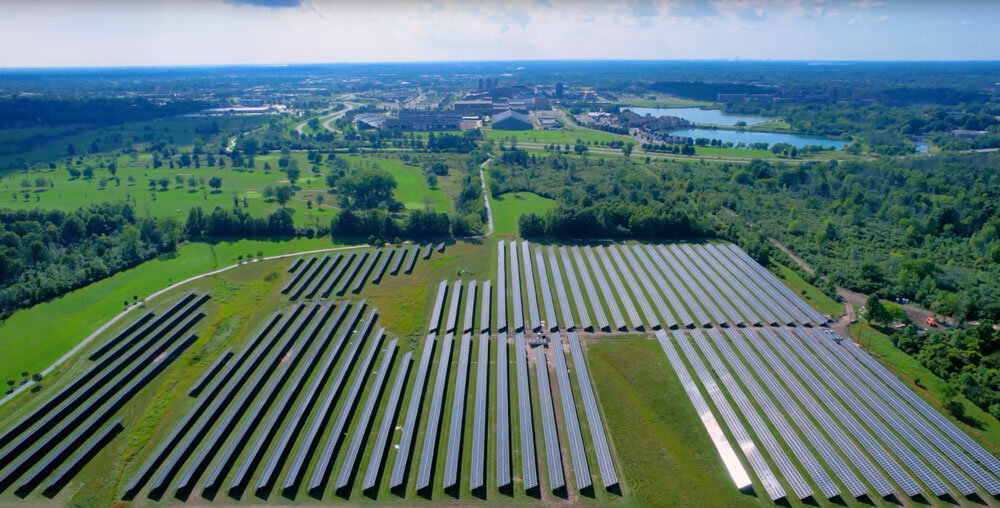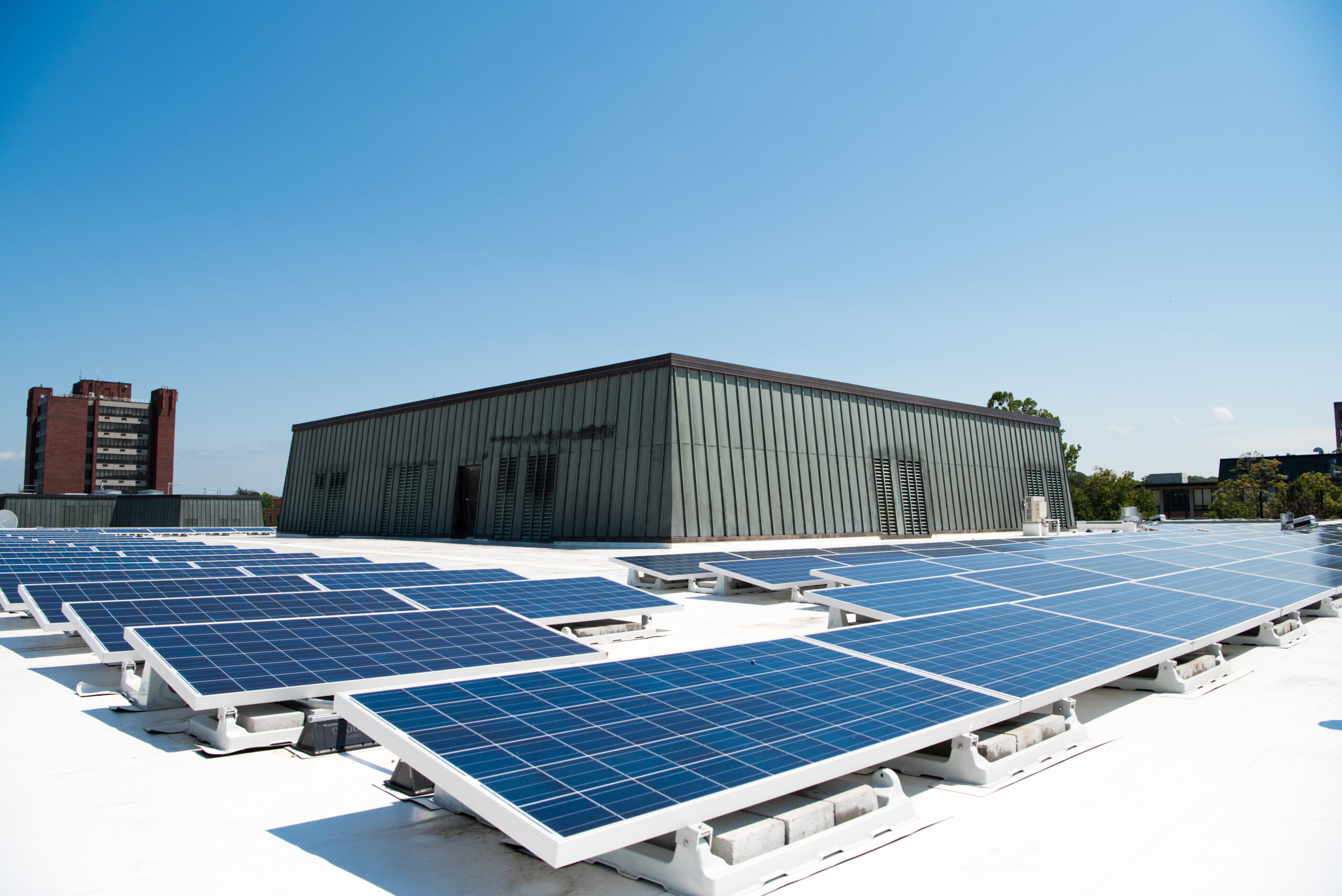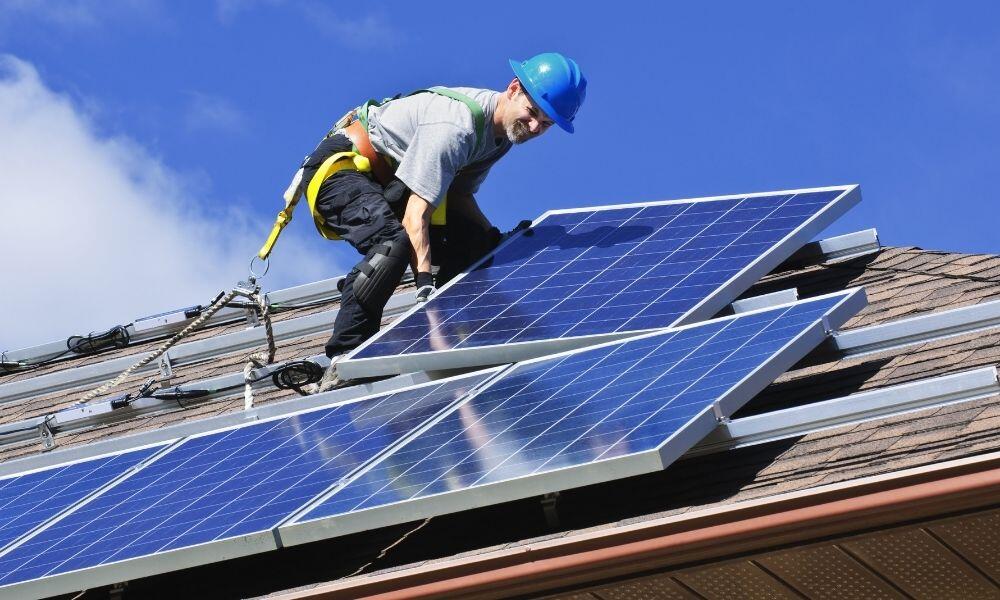UB advances commitment to clean energy as on-site solar arrays fire up

buffalo.edu
David J. Hill
December 14, 2022

Vice President Kamala Harris pointed them out as one of the reasons she chose UB as the place in September to tout the Inflation Reduction Act and Congress’ aggressive climate investment.
They are the new solar arrays sprinkled around the North Campus as part of an on-site solar project that began in 2020. Now, with utility company work nearly completed, UB’s on-site solar arrays are beginning to produce electricity. In fact, they will top out at 12.7 million kWh — or enough to power more than 1,750 homes or charge over 1 trillion smartphones — making UB one of the largest on-campus producers of renewable energy in the country.
The project — composed of five solar arrays on university-owned land on the North Campus, as well as four rooftop solar installations on UB buildings — has increased campus capacity by 15 times current levels.
“The on-site solar project was created as part of UB’s aggressive new climate action plan, UB’s 10 in 10, which calls for the university to achieve climate neutrality by 2030,” says Laura Hubbard, vice president for finance and administration. “The completion of our on-site solar puts the university another step closer to significantly reducing our carbon footprint, which has already decreased by a third over the past several years.”
Harris highlighted UB’s sustainability track record in September, saying, “The work that is happening here is very exciting and really a model for our country.”
The project is part of an innovative Power Purchase Agreement, or PPA. UB does not own the panels; nor did it pay for them to be installed. Instead, UB has agreed to purchase all the clean energy produced at them over a 20-year period. The university’s calculations and estimates forecast that this will be cost neutral, Hubbard notes, adding that the PPA affords the university a measure of predictability and stability in its utility budget.
The majority of the renewable energy being produced is derived from a series of ground-mounted solar arrays comprising more than 22,600 solar panels. One grouping, a series of three solar arrays, is known as the Bizers, given its location near Bizer Creek on the North Campus. Another array, Creekside, is immediately behind the Creekside Village student apartments and produces more electricity than the housing complex uses. And the largest array, called the UB Solar Stroll, is located in a large field near the Amherst bike path on the eastern edge of the campus.
All five of the ground mounts leveraged the design of UB’s Solar Strand and remain barrier-free, allowing nature and humans to become closer with the way in which clean renewable electricity is generated.
“It’s important that our renewable energy be integrated into the campus in alignment with not only our long-term planning but also as a way to reinforce the living laboratory and experiential learning opportunity that this new initiative offers to our university campus,” says Tonga Pham, associate vice president, University Facilities.
There are also four new rooftop-mounted solar arrays on the North Campus, a challenging endeavor given that none of the buildings on the North Campus — much of which was built in the 1970s — were initially designed for solar energy. The university conducted an extensive survey of all campus rooftops and selected the four buildings — Baird Hall, Center for the Arts, Helm Facility Warehouse and the John Beane Center — based on each rooftop’s age and structural integrity.
Going forward, UB is considering mandating that all new construction provide the ability to install rooftop solar on buildings, similar to a measure California recently enacted requiring builders to include solar power and battery storage in most new construction projects.
“As a major public research university, these solar panels speak — they communicate and reinforce our value of taking responsibility for our actions as an institution,” says UB Chief Sustainability Officer Ryan McPherson.
“The on-site solar project is a reflection of the fact that we know that UB uses a lot of electricity, and we need to take responsibility for that usage in a clean, renewable way,” McPherson adds. “The solar arrays are a visual reminder that we are putting our actions front and center.”
Buffalo-based Solar Liberty installed the ground-mount and rooftop arrays with key support and guidance from UB Facilities.
“The University at Buffalo is a pioneer in the adoption of solar energy for college campuses, employing designs that significantly reduce carbon emissions and operational costs while uniquely incorporating educational tools that students have and will learn from for decades,” says Solar Liberty Vice President Nathan Rizzo.
“For over ten years, Solar Liberty has been honored to be UB’s partner of choice for the engineering and construction of numerous solar arrays, beginning with the Solar Strand in 2012 and continuing through this year with the new roof- and ground-mounted systems.”
UB’s on-site solar installations received support from the New York State Energy Research and Development Authority’s REV Campus Challenge.
NYSERDA President and CEO Doreen M. Harris praises UB’s climate neutrality goal and the on-site solar initiative.
“The leadership shown by the University at Buffalo through this climate action plan will serve as an example for other higher education institutions that are interested in developing cleaner, more sustainable campuses,” Harris says. “On-site solar provides the tangible benefit of clean energy for students and the community at large, resulting in lower greenhouse gas emissions, a healthier place to learn, live and work, and a robust landscape to fight climate change at the local level.”
Full article: https://www.buffalo.edu/ubnow/stories/2022/12/on-site-solar.html




